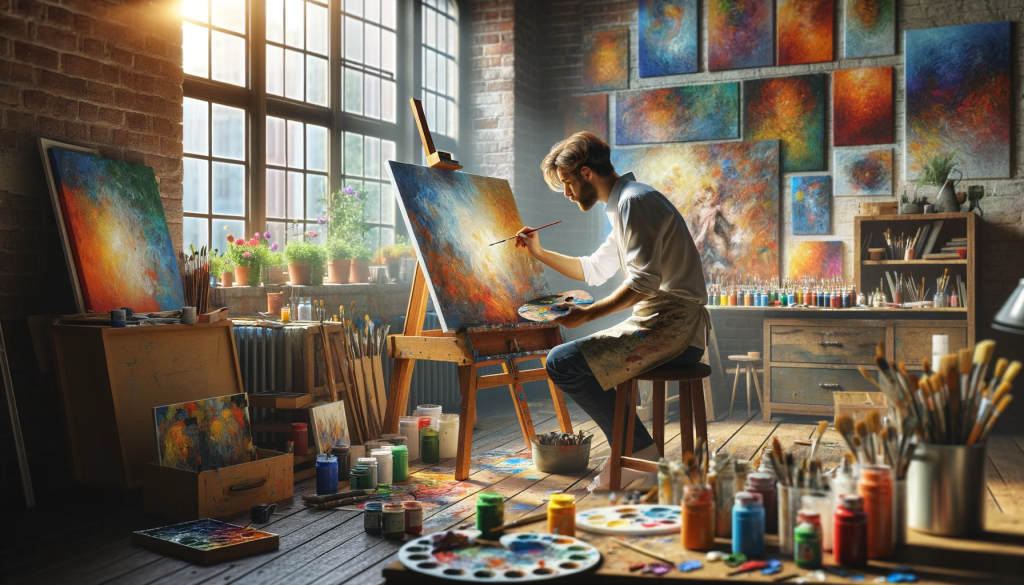Introduction
Creativity is like a magical spark that lights up new ideas and inventions. It’s what makes us dream up stories, paint beautiful pictures, and even solve tricky math problems in new ways. Creativity is not just about being good at art or music; it’s about thinking differently and coming up with ideas that no one has thought of before. This article will explore creativity from three angles: art, science, and philosophy.
The Art of Creativity
When we think of creativity, we often think of art first. Artists like painters, writers, and musicians use their imagination to create things that can make us feel happy, sad, excited, or even inspired. Creativity in art is about expressing yourself and your view of the world in unique ways. Whether it’s a painting that uses bold, unexpected colors or a story that takes us to a fantasy world, art shows us how creativity can be free and boundless.
The Science of Creativity
Creativity is also a scientific puzzle. Scientists study how our minds come up with creative ideas. They’ve found that creativity is not just about one part of the mind but involves many different parts working together. For example, one part of the mind might be good at thinking of lots of ideas, while another part helps us choose the best one. Science has also shown that creativity can be improved with practice, just like a muscle. By trying new things and challenging our minds, we can become more creative.
The Philosophy of Creativity
Philosophy is about asking big questions, like “What does it mean to be creative?” Philosophers think about whether creativity is something we are born with or something we can learn. Some believe that creativity comes from being curious and always asking questions about the world around us. Others think creativity is about connecting things that might not seem related at first. Philosophy helps us understand that creativity is not just about making things but also about how we think and see the world.
Spiritual Nature of Creativity
The spiritual nature of creativity can be described using the perspectives found in Noah Webster’s 1828 dictionary. According to Webster, the spiritual aspect is not material but consists of the spirit, which can be thought of as the soul or the inner essence of a person. This spiritual dimension is intellectual and mental, suggesting that creativity involves not just the physical act of creating but also the inner, thoughtful, and emotional processes. Spirituality in creativity pertains to the deeper aspects of our nature, involving pure and holy expressions that might reflect our inner selves and moral values. This interpretation emphasizes that creativity is not only about producing art, science, or philosophy but also about expressing the deeper, spiritual aspects of our humanity.
Creativity in Everyday Life
Creativity is not just for artists, scientists, or philosophers; it’s for everyone. Every day, we use creativity when we find new solutions to problems, make a funny joke, or even decide what to wear. Creativity can make life more interesting and fun. It’s about being open to new ideas and not being afraid to try something different.
Conclusion
Creativity is like a wonderful journey with no single destination. It’s a blend of art, science, and philosophy. Whether we are painting a picture, solving a math problem, or just daydreaming, we are using our creative powers. Remember, everyone has the ability to be creative in their own unique way. So, let’s keep exploring, asking questions, and imagining new possibilities!



